Our aim goes far beyond delving into recipes and teaching culinary techniques; we intend to promote sustainable eating as an essential part of preserving humans’ relationship with nature. As such, we invite anyone who shares this same conviction or has a secret family recipe they would like to share with the rest of us to visit us online or contact us at [email protected] for all collaborations and submissions. Let’s show appreciation for those that dedicate their lives using natural deliciousness to establish meaningful human bonds through cuisine!
Now love yourself and enjoy this one ...
Lemon Panna Cotta Recipe – How to make a great, super easy and creamy dessert with lemons – with the video tutorial.
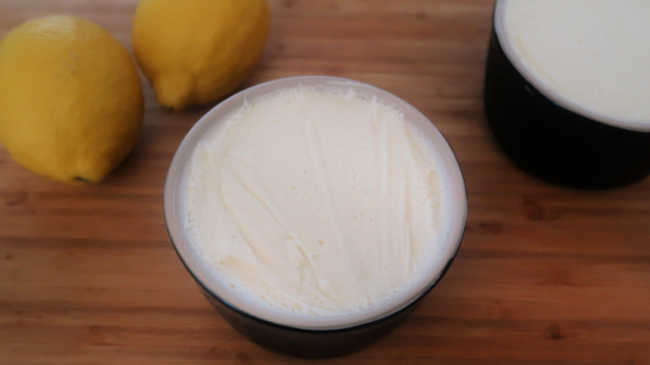
Lemon Panna Cotta
This lemon panna cotta is an easy no bake dessert that’s creamy, light, full of luscious lemon flavor and only has a handful of ingredients.
Lemon lovers will adore this lemon version of the classic Italian dessert that’s infused with fresh lemon zest and plenty of creamy ingredients to create an indulgent make ahead dessert that will wow a crowd.
How To Make Lemon Panna Cotta
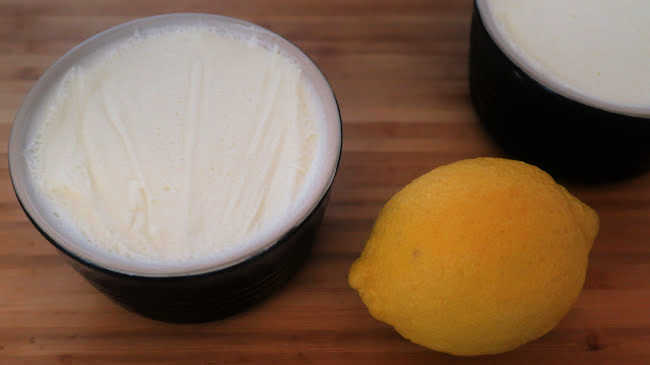
To make the simple dessert, start by blooming the gelatin by sprinkling it into a small bowl and pouring over water.
You can just use cold water, there’s no need to use boiling or warmed water to bloom the gelatin.
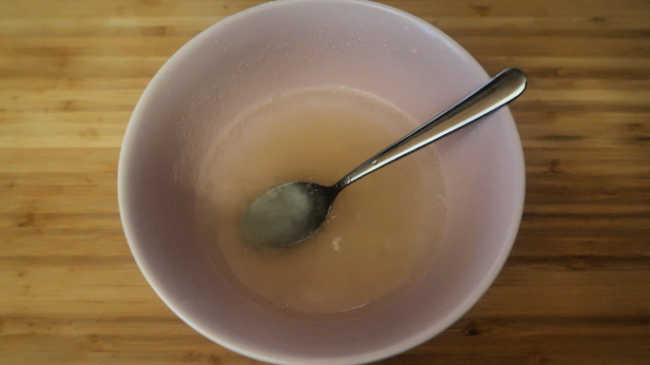
Stir gelatin mixture to help it dissolve, then set it aside to bloom while you see to your creamy and lemon ingredients.
Then, get to mixing the creamy ingredients by pouring the cream, milk and sugar into a small saucepan.
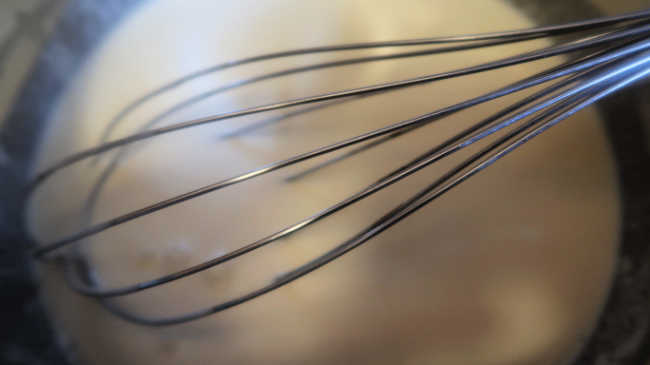
You can use your cream, milk and sugar or sweetener of choice, depending on your dietary requirements, what you find at local grocery stores and what you usually include in your sweet treats.
For the lemons, use 1 to 2 lemons, depending on how lemony a flavor you’re after.
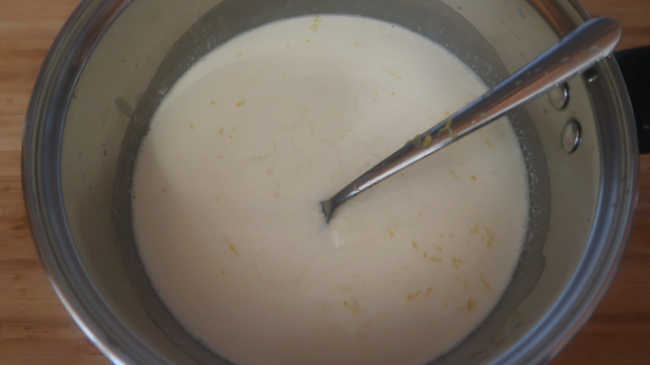
Grate the lemon rind or zest using a microplane grater or vegetable peeler over the creamy ingredients and then cut the lemon or lemons in half and squeeze the juice over a fine-mesh strainer to catch the lemon pips.
Place the saucepan on the stove top over medium heat and then cook until steaming, removing from the heat just before the creamy mixture comes up to boiling point.
Whisk the bloomed gelatin into the creamy, lemon mixture, then allow to cool to room temperature. You can pass the mixture through a sieve if you’d like a super smooth panna cotta, but we like the bits of lemon peel, so leave it as is.

Pour the panna cotta mixture into individual ramekins, serving bowls, custard cups or glasses, then pop into the fridge for a few hours, or overnight, to set.
Enjoy on it’s own or topped with fresh fruits, berry sauce or even an indulgent swirl of whipped cream.
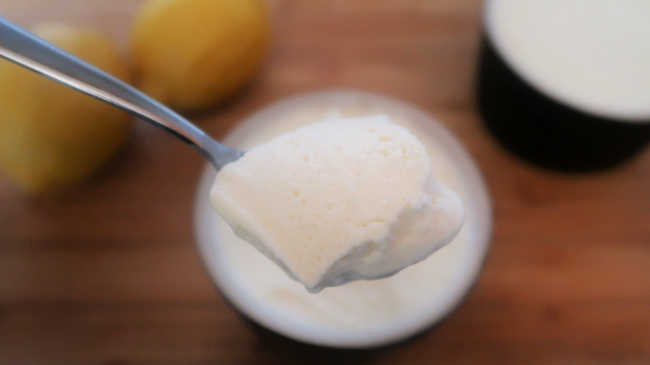
Lemon Panna Cotta Recipe
- 2 teaspoons Gelatin
- 1/3 Cup Water
- 1 Cup Heavy Cream
- 1/2 Cup Milk
- 1/4 to 1/2 Cup Sugar
- 1-2 Lemons
- Sprinkle gelatin into a small bowl, pour over the water, stir to combine and help the gelatin dissolve, then set it aside for 5 to 10 minutes to bloom.
- Combine cream, milk and sugar in a small saucepan, then grate over the lemon zest and squeeze the lemon juice over a fine-mesh sieve to catch any pips.
- Move the saucepan to the stove top and place it over medium heat.
- Heat the creamy mixture until warmed through and steaming, but not yet boiling.
- Remove from the heat, pour the gelatin mixture over the cream mixture then whisk well to fully combine.
- Allow to cool to room temperature, then pour mixture into individual ramekins, jars or small serving bowls and cover with plastic wrap.
- Place in the fridge for a few hours or overnight, to set, then enjoy as is or with your choice of sides or toppings from fresh raspberries, raspberry sauce, fresh blueberries or any other fresh berries.
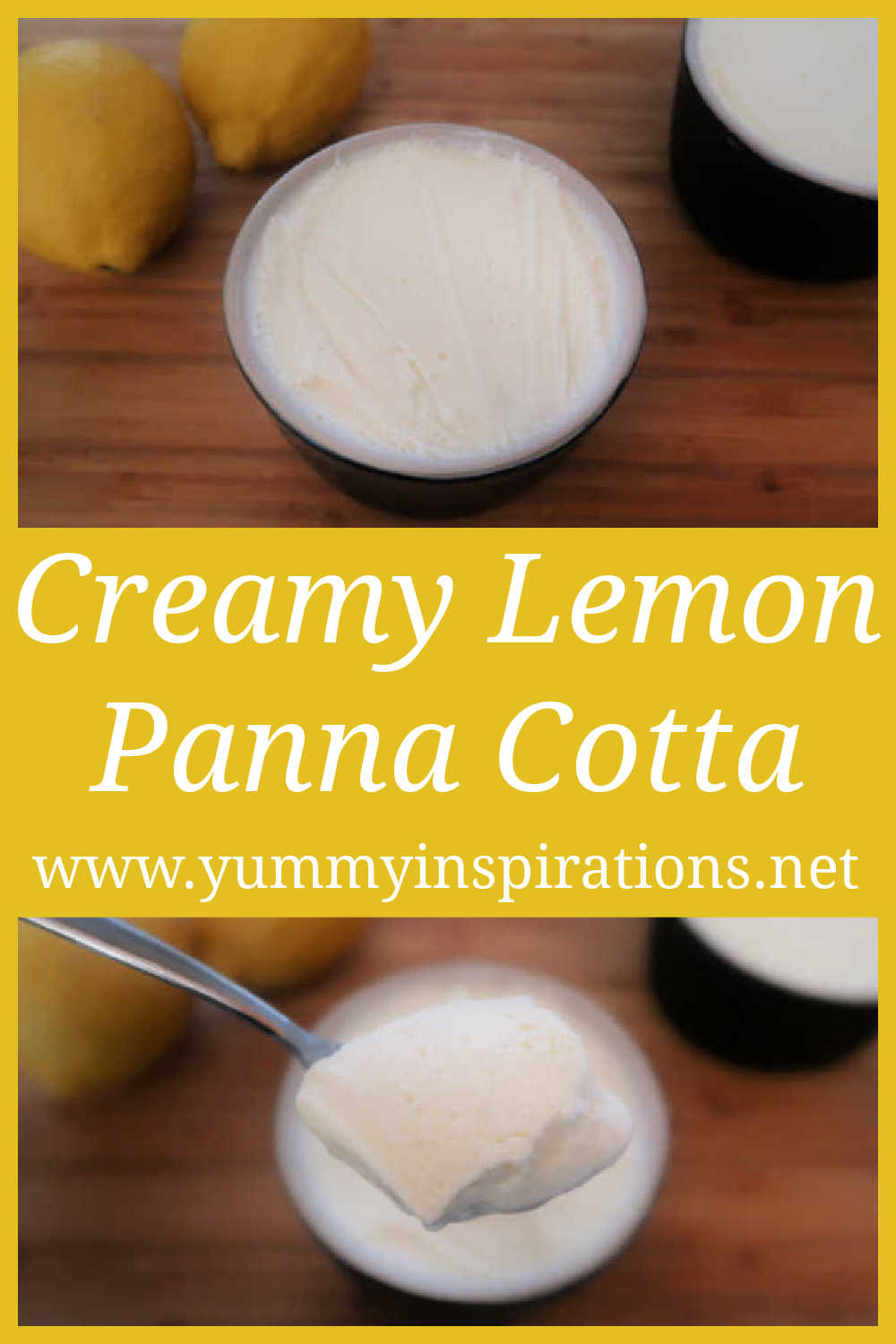
Recipe Video Tutorial
Here’s the video where you can watch the lemon dessert being prepared, step by step. Hit play below or click here to watch on YouTube.
More Easy Dessert Recipes
2 Ingredient Chocolate Truffles
10 Low Carb Lemon Desserts
Raspberry Cheesecake Mousse
Lemon Panna Cotta Recipe

Lemon Panna Cotta Recipe – How to make a great, super easy and creamy dessert with lemons – with the video tutorial.
Ingredients
- 2 teaspoons Gelatin
- 1/3 Cup Water
- 1 Cup Heavy Cream
- 1/2 Cup Milk
- 1/4 to 1/2 Cup Sugar
- 1-2 Lemons
Instructions
- Sprinkle gelatin into a small bowl, pour over the water, stir to combine and help the gelatin dissolve, then set it aside for 5 to 10 minutes to bloom.
- Combine cream, milk and sugar in a small saucepan, then grate over the lemon zest and squeeze the lemon juice over a fine-mesh sieve to catch any pips.
- Move the saucepan to the stove top and place it over medium heat.
- Heat the creamy mixture until warmed through and steaming, but not yet boiling.
- Remove from the heat, pour the gelatin mixture over the cream mixture then whisk well to fully combine.
- Allow to cool to room temperature, then pour mixture into individual ramekins, jars or small serving bowls and cover with plastic wrap.
- Place in the fridge for a few hours or overnight, to set, then enjoy as is or with your choice of sides or toppings from fresh raspberries, raspberry sauce, fresh blueberries or any other fresh berries.
Nutrition Information:
Amount Per Serving: Calories: 123
The post Lemon Panna Cotta Recipe appeared first on Yummy Inspirations.
By: Jolene @ Yummy InspirationsTitle: Lemon Panna Cotta Recipe
Sourced From: yummyinspirations.net/2022/01/lemon-panna-cotta-recipe/
Published Date: Wed, 19 Jan 2022 14:09:10 +0000
Frequently Asked Questions
What's the difference?
Organic food is free from pesticides, chemical fertilizers and sewage sludge. It can also be grown without irradiation or genetic modification. Organic farming practices support soil health, water quality, and animal welfare.
Inorganic foods can be grown using pesticides, chemical fertilizers and sewage sludge. Radiated foods can be treated with radiation. Genetically modified organisms (GMOs) are created by biological engineering techniques.
The term "natural", often used interchangeably to mean "organic," is frequently used. But natural does not necessarily imply organic. Products labelled "natural", however, may contain synthetic chemicals.
Organic produce is usually more nutritious that conventional produce. This is because organic soil contains fewer toxic chemicals and pesticides. Organic farmers also don't use synthetic fertilizers or hormones, pesticides, or antibiotics.
How do you know if your food is organic?
If you ask any chef, he'll tell you there's nothing more important than fresh ingredients. This is because eating well makes us feel better.
The same is true of our food. Organics can be traced back to their source and whereabouts. We also know it was not treated using harmful chemicals.
Organic food does not contain synthetic pesticides, fertilers, hormones or antibiotics. These substances are forbidden for organic farmers.
But that doesn't mean there isn't an art to growing organic crops. You have many options to safely grow them.
Sometimes, organic farming is called sustainable agriculture. It is a less resource-intensive alternative to conventional farming, but still provides enough nutrients to sustain life.
Organic farming practices include crop rotation, composting manure, cover cropping, and intercropping. These techniques prevent soil erosion while improving water quality.
They also reduce chemical runoff into waterways. Local farms can be found in cities that raise organic produce.
Two types of organic product certification programs exist. One is certified by the USDA National Organic Program, and the other is certified by independent certifying agencies. Both require strict compliance with organic standards.
Certified organic products may bear the USDA seal or the symbol O Seal, which indicates that the product meets federal requirements.
What are organic fruits?
Organic foods are free of pesticides and synthetic fertilizers. Organic foods contain more nutrients like vitamins A, C and E, as well as omega-3 fatty oils. These nutritious ingredients make organic foods better for our bodies, and for the planet.
Organic foods are made using sustainable agricultural practices, which protect soil quality and promote biodiversity. They are free of harmful chemicals and sewage sludge.
Organics are often associated with produce. However, organic products can include dairy, meat, poultry and eggs as well as personal care items and pet food.
The USDA defines organic as crops that are grown according to federal standards. Farmers cannot use conventional (non-organic) methods to grow these foods. They may however use approved natural pest management methods like crop rotation or cover cropping as well as organic feeds.
A farmer must also adhere to guidelines about how much fertilizer or pesticide he applies during the growing season. Also, he must rotate his fields between different crops. Farmers cannot use genetically modified organisms (GMOs), artificial growth hormones, synthetic insecticides, or synthetic fertilizers.
The requirements for organic fruits and vegetables are met if they are labeled 100 percent organic. But, not all farms label their produce as 100% organic. It would confuse consumers. Instead, they will label the product as "made from organic ingredients". "
What are the most popular organic products?
Today, organic food is the fastest growing industry. But even though we've come a long way from our roots, there is still much room for growth.
Organic products are the future. They are safer, healthier for the environment, and easier to afford for consumers.
They are also generally more expensive. That is why we developed the Organic Food Index. We wanted to determine which foods are the most popular among shoppers today and whether these trends are changing.
The results showed that organic food is increasing in popularity. The number of Americans shopping for organic food grew by nearly 50% between 2011 and 2012.
According to USDA, organic production grew by 10% last year. Organic food now accounts for 9% of U.S. agricultural output.
While organic food is certainly gaining ground, it seems that it is still an expensive choice for consumers. The average retail price for organic food is almost twice that of conventional foods, according to the Organic Trade Association (OTA).
The organic food sector is growing faster than other segments of the food supply. You'll notice that organic food consumption has increased steadily since 2009.
According to OTA however, the volume in supermarkets of organic products grew by 14% from 2010 to 2011.
This is because consumers are looking for healthier foods. Organic food sales have been increasing in all age groups.
However, the younger generation is leading the charge in choosing organic food. Millennials are twice more likely to purchase organic food than baby boomers. The 25% of organic food purchase made by younger adults below 35 are made up of young adults.
What is inorganic?
Organic food is made without pesticides or artificial fertilizers. These chemicals can cause health problems in organic foods.
Organic food is produced naturally and without any harmful substances, such as chemical fertilizers or pesticides. These chemicals can cause harm to animals and humans.
Inorganic food is meat, fish, eggs and dairy products, including butter, yogurts honey, yogurts, butter, cream, cheese, butter, yogurts, honey and grains.
The way that an agricultural product is grown organically is what the term means. Organic farming, for example, uses natural methods and soil amendments in order to grow crops. Conventional farming, however, uses pesticides and synthetic fertilizers.
U.S. Department of Agriculture (USDA), must ensure that organic food meets strict standards. All organic food must comply with the National Organic Program Standards. This means that it must not contain prohibited materials like antibiotics, growth hormones or genetically modified organisms (GMOs), as well as industrial solvents. Organic food must not contain toxic chemicals, petroleum-based fertilizers or sewage sludges.
Is organic food good for you?
There are two types: foods that we grow and those that we purchase from others. There are exceptions to these categories, but most people will answer your question yes. Organic food is safer because it does not contain any harmful chemicals.
You can find organic food in supermarkets across North America, Europe, Asia, Latin America, and Africa. Most grocery stores now carry organic food, making it easier for consumers to choose organic products.
Organic food has higher levels vitamins, minerals and antioxidants which makes it more delicious and nutritious. In addition, organics are usually grown without applying synthetic fertilizers and pesticides, which means they do not pollute our soil and water supply.
The USDA regulates organic farming practices. It requires that farmers follow strict guidelines in order to ensure organic produce is safe for consumption. There are more than 30 million acres of US farmland that have been certified organic.
Organic food is often less expensive than conventional food. For the same amount, consumers pay less. Organic farms can charge lower prices for their crops since they aren't required to pay for expensive chemical inputs such as insecticides or fungicides.
According to Environmental Working Group, organic food can be 10 percent cheaper per pound when compared to conventionally produced food. If you care about the health of yourself and your family, consider switching to organic food.
Organic food has become an increasingly popular alternative to American standard diets. Although many may think that organic food is only available at specialty markets and gourmet restaurants, this isn't true. You can easily purchase organic food in regular grocery stores throughout the United States.
In recent years organic food sales increased substantially. In 2012, the US market value for organic food was $43 Billion. This is an increase of $21 Billion from 2007.
Statistics
- Nutrients like omega-3 fatty acids were up to 50 percent higher in organic meats and milk than in conventionally raised products.[3] (en.wikipedia.org)
- When packaged products indicate they are “made with organic [specific ingredient or food group],” they contain at least 70% organically produced ingredients. (usda.gov)
- To provide the highest quality products and services to every customer, with a dedicated workforce that puts the customer first and takes the extra step to achieve 100% customer satisfaction and loyalty. (hollinsorganic.com)
- Brands participating in this challenge are committed to using 100 percent sustainable cotton by 2025.[5] (en.wikipedia.org)
External Links
ams.usda.gov
ota.com
ecfr.gov
usda.gov
How To
How to save money on organic meat
In this post, I'll share tips and tricks on buying organic meat without breaking your bank account.
Here are some tips to help you find low-cost organic meats. Also, how much per pound they cost. This will teach you how to get the most out of your purchase.
To eat well, you don't have to spend a lot. Sometimes, you have to use your creativity to save money while still eating well. Here are my top tips for keeping food costs down and still enjoying the many benefits of organic meat.
- Wholesale clubs - Sams Club, Costco, and Sams Club offer great deals on bulk foods like chicken breasts. If you're lucky enough to live near one of these stores, you can often get deals on large quantities of meat (up to 50 pounds). This will ensure that you don't waste any meat. If you buy it in bulk you can freeze it so it lasts more.
- You can shop online for meat at great prices. Amazon offers Prime Pantry weekly deals, including free shipping for orders above $35 You can get discounts on ground beef, beef roasts, lamb steaks and pork loins. It is easy to browse their website and check out what is on offer at different times.
- Local farmers often charge less than big box retailers due to the fact that they don't have large overheads for stocking their shelves. Local farmers also know exactly what their animals have eaten and drank so they can determine what's in their bodies.
- Look for meat cuts that are leanest - Lean meat is generally cheaper to cook than fatty meat. Look for the tiniest cuts. The most commonly used cuts include flank steak, tenderloin and top round steaks. These cuts are high in protein and low in fat.
- Try new recipes - Don't be afraid to try new things! You can cut down on your grocery costs by starting to cook with ingredients you don't have before. It's possible to create delicious meals with fresh tomatoes, onions and garlic using olive oil, spices, and garlic.
- Use leftovers to create new recipes. You can make quick meals or lunches from leftover meat.
So there you go! Here are some tips on how you can afford organic meat despite being on a strict budget. Do you have other tips? Do you have any suggestions for me on where to find cheap meat?
Did you miss our previous article...
https://belovedsaffron.com/recipes/valentines-day-cookies
.png)





